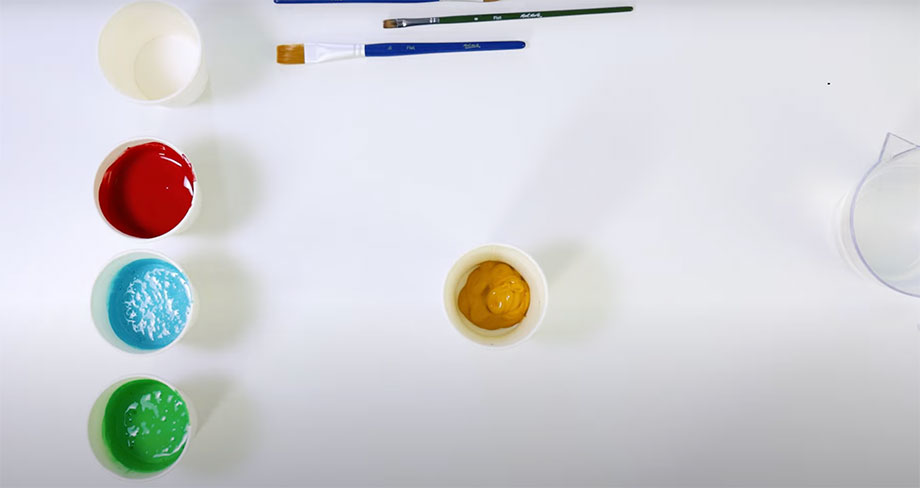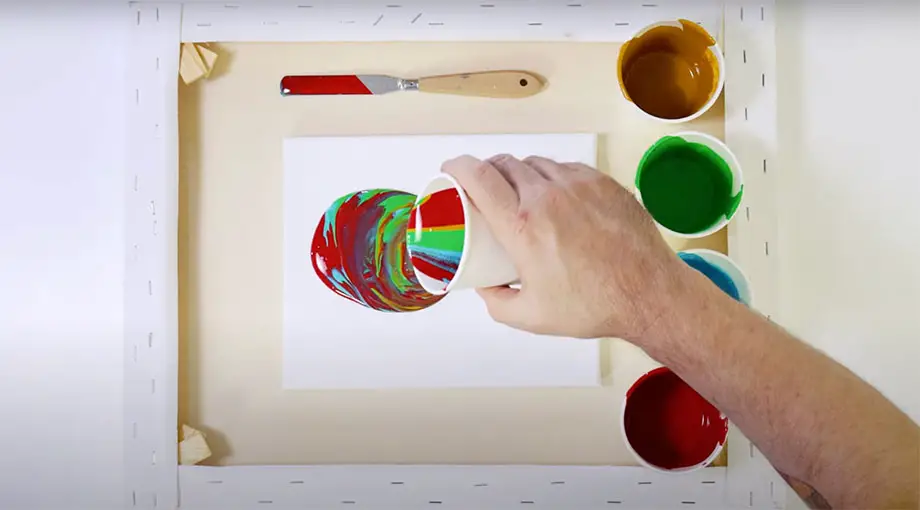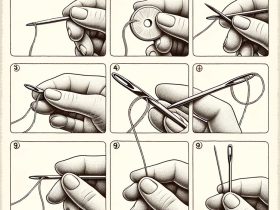Thicker isn’t always better when painting with acrylics, especially if you’re starting. As a beginner, the viscous liquid paint fresh from its tube can mess up your masterpiece. That’s why experienced painters know how to thin acrylic paint before applying them for that perfect color depth and flawless finish.
Before your next acrylic pouring masterpiece, you’ll want to ensure that the thinning process is done correctly. It’s not always easy. But luckily, we have some tips and tricks. With patience and practice, you can ensure the perfectly thinned acrylic paint for a beautiful creation- no frustration or re-stocking necessary.
Importance of Thinning Acrylic Paint Before Application
Acrylic paint is water soluble. Crafting with it might seem unsafe, but it’s easier than you think. The fun part is that mixing acrylic paint with water allows you to adjust the consistency from thick and creamy to super light, like watercolor. But be careful; if done wrong, this can make the color intensity too low or even disappear altogether.
Adding water to oil-based paints will not hinder their dissolving properties, unlike acrylic paints. A much stronger solvent, such as an acrylic medium, is typically required to dissolve an oil-based paint.
Acrylic paint is water-soluble due to the liquid binder it contains- an acrylic polymer emulsion that quickly breaks down when exposed to liquid. This pigment is essential in coloring the paint and providing your desired hue. This highly effective binding agent makes working with acrylics easier and more enjoyable for artists of all skill levels.
Different Ways to Thin Acrylic Paints
Water
As mentioned before, you can dilute acrylic paint in a few ways. However, the most popular and accessible way is by using distilled water. Let’s talk about how to use water to thin acrylic paint. To achieve a proper mixture, never mix more than a 50/50 water and acrylic paint ratio. Adding more water to an already established 1:2 balance may cause damage to your acrylic paint.
Is it OK to mix water with acrylic paint?
Adding excessive amounts of water to your paint can saturate the canvas and cause it to flake when dry. Thinning acrylic paint with excess water causes it to chip off from surfaces. So remember: use enough liquid for a smooth application without overdoing it. We suggest using a palette knife to get the best results when thinning acrylic paints with water.
Gesso
Gesso is made of chalk, gypsum, or pigment with a white or clear consistency. You can easily mix the gesso with acrylic craft paint if you want to thin out acrylic paint for a unique color palette and texture.
Many canvases come with a primed surface, making it a breeze to finish your painting. However, if yours doesn’t come prepped, you can still prime it yourself and ensure all the paint stays.
Anti-congealing Agents
If you want to achieve the ideal consistency, introducing thinning agents can help. Airbrush and acrylic paint thinners are two options capable of improving your desired texture.
Experienced airbrush artists understand that thinning acrylic paint is one of the most reliable ways to achieve optimal results. If you want your airbrush color to look perfect, the US Art Supply Airbrush Thinners are what you need.

Acrylic Glazing Liquids
If you want to thin acrylic paint and keep it fluid longer, use an acrylic glazing liquid. It’s usually a milky white consistency and has the added benefit of a slow drying process, so your work won’t dry as rapidly as usual.
You can easily blend the glazing liquid into your acrylic paint for consistency. Furthermore, this won’t cause any flaking or fading of color. You can mix varying amounts of glazing liquids for a light shade or a darker hue to give you more depth.
Flow improvers
Flow improver is the perfect way to thin acrylic paint while achieving a better paint flow. If you are looking for thinning acrylic paint for pouring, this won’t compromise your paint’s consistency or strength.
These innovative additives are acrylic polymer emulsions, the same binding agent used in acrylic paints. A flow improver will save you time and effort and ensure your paint won’t flake off later.
You can continually add the flow improver until you reach the desired consistency. The best part is that, unlike other ingredients, there’s no need to measure precise proportions when mixing.
Alcohol and Cleaning spray
Utilizing items you can find in your kitchen, such as rubbing alcohol, hydrogen peroxide, and cleaning spray, is one of the ways to thin acrylic paint.
Can I use alcohol to thin acrylic paint?
Thinning acrylic paints with isopropyl alcohol is a great way to achieve your desired consistency. However, it’s essential to do it correctly. If the concentration of alcohol is too high, the paint can become clumpy and unappealing. Thus, be sure to exercise caution when mixing these two materials.
To ensure a successful outcome, it is advised that you apply concentrations in the range of 30-70%. Alternatively, you can dilute the alcohol with water before using it.
Acrylic paint thinner and Mineral spirits
For thinning paint, some prefer considering a variety of chemical thinners. However, this should be done carefully and follow each manufacturer’s instructions.
As thinning mediums, spirits act as solvents. Overusing too many paint thinners may result in damaging colors. It is not advised to thin acrylic paints for beginners. The optimal way to thin your paint is through mediums.
To preserve the adhesiveness of your paint, it is not recommended to thin water-based paints using mineral spirits since they are petroleum-based.
How to Thin Acrylic Paint for Spraying?
It is essential to thin paint to ensure total control over the results, a consistent finish, and even the application of paint. Adding to its importance are environmental factors like air pressure, humidity, and temperature, which can make your color thicker than usual.
It is important to note that the thinning procedure for spray guns depends on your chosen type of paint. The most popular options include acrylic, oil-based, and latex paints.
If you’re looking for thin paints for spraying, the method varies based on your sprayer type, whether HVLP or airless guns. Here are some quick and easy tips to follow for thinned paint.
High Volume, Low Pressure (HVLP) paint gun
An HVLP paint gun is ideal for latex and oil paints, yet it can also be used with acrylics. Thin your acrylic paint using 10 to 30% water to get the desired results.
You can mix paint conditioner and acrylic latex paint if you use it in an unfriendly environment. Subsequently, the colors are less vulnerable to environmental elements. Avoid using paint conditioner unless instructed otherwise, as it isn’t thinner.
Airless spray guns
It’s unnecessary to thin acrylic latex paint for using it with an airless spray gun. However, thinning the paint is recommended if you use a minor spraying system. As for acrylic paint, adding 20% water will ensure optimal results when using the spray gun.
How to Thin Acrylic Paint for Airbrush?
Achieving flawless and consistently smooth paint requires precisely thinned paints. To ensure that the procedure goes off without a hitch, familiarize yourself with the airbrush brand and type and its liquid nozzle size, needle size, and ideal operating pressure.
Depending on your desired effects, you can choose from various colors; some are entirely transparent, while others are opaque. When airbrushing, the ratio of thinning products plays a key role. Knowing this information helps ensure that viscosity remains in check for optimal results.
The opacity of the colors you’re using dictates how much reducer is required for thinning them. Opaque colors are thicker, requiring more reducer to achieve the desired consistency. On the other hand, transparent shades need less reducing agent or, in some cases, none whatsoever, as they already have a thinner texture.
How to Thin Acrylic Paint for Pouring Using Pouring Medium?
The pouring medium was tailor-made for pouring, but you can also utilize it for your acrylic painting. It will enhance the flow without altering the intensity of colors or pigments. Though there are other mediums for thinning acrylic paint, they are more costly and professional-grade acrylic mediums. Hence, water is the most affordable choice.
The thinning medium is far superior to water when getting flawless results in your artwork. Also, most artists prefer them for their myriad advantages over using distilled water. To achieve a thinner acrylic paint consistency for pouring, add 10-20% pouring medium to your paints. Just remember that adding this thinning medium may take longer for the color to dry.
You can use Golden Artist Colors Color Pouring Medium, Liquitex Professional Pouring Effects Medium, or DECOART Pouring Medium.
Conclusion
This guide was all about how to thin acrylic paint. Thinning acrylic paint takes time and practice, so don’t be discouraged if your results aren’t perfect the first few times. You can use different ratios of acrylic paint thinner and thinning mediums to find the right balance for your desired outcome. Don’t forget to use high-quality acrylic paint thinner, as it will ensure you get the best results each time you want to thin acrylic paint.













Leave a Reply